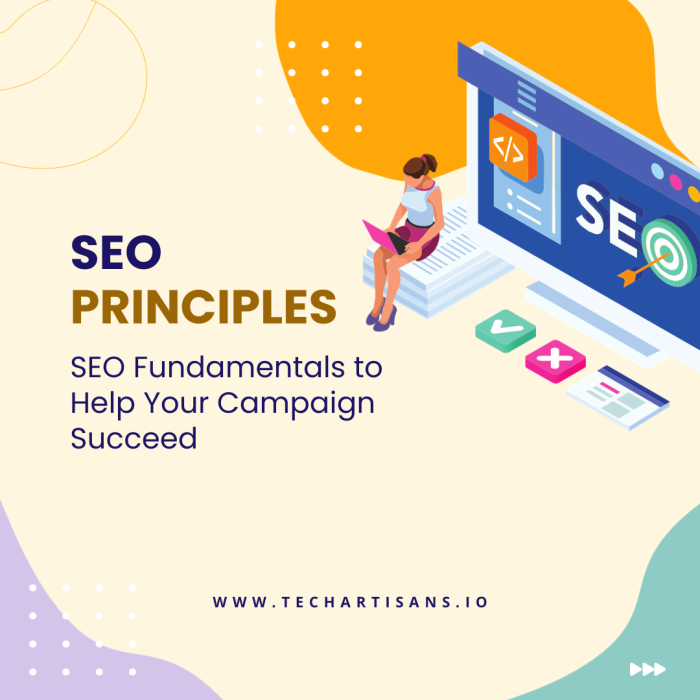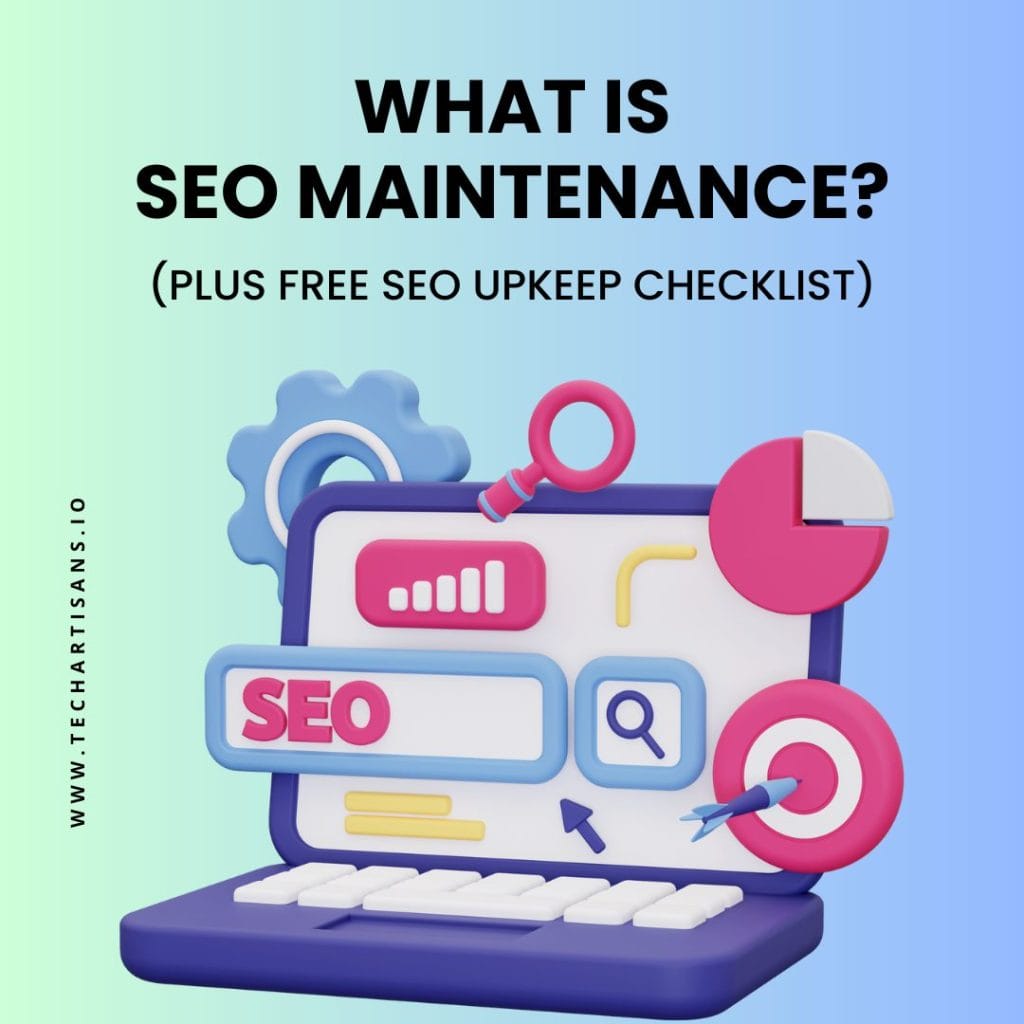Welcome to the world of SEO! This blog unravels the crucial SEO Principles: SEO Fundamentals to Help Your Campaign Succeed. As a business owner, understanding and applying these principles can significantly enhance your online presence and propel you toward unprecedented success. So, let’s delve into the realm of SEO best practices and unlock your true potential.
SEO Principles: SEO Fundamentals to Help Your Campaign Succeed
Let’s explore the SEO Fundamentals to help your campaign succeed. From keyword research and on-page optimization to link building and content creation, these principles will equip you with the necessary tools to drive your campaign toward success.
Essence of Keyword Research

Keyword research is one of the most vital SEO principles. For more insights, explore our detailed guide on how to research keywords: a step-by-step guide. It forms the backbone of your digital marketing strategy by guiding you toward the terms your target audience is searching for.
Significance of Thorough Keyword Research
Thorough keyword research is integral to crafting an impactful SEO strategy, as detailed in our SEO principles and fundamentals article. It involves identifying and analyzing the search terms that potential customers use when looking for products or services similar to yours. This deep understanding allows your business to align its content with the needs and desires of your target audience.
Tools for Keyword Identification

Effective keyword identification hinges on the right tools, like those discussed in our article on free content writing tools for writing, editing, and content creation. Google Keyword Planner, SEMrush, and Ahrefs are some of the powerful tools for unearthing relevant keywords. They offer comprehensive insights into search volumes, competition levels, and trends, helping you to optimize your SEO strategy.
Integration of Keywords

Integrating keywords in your title, headings, and URL is a fundamental SEO principle. The title attracts users and search engines, giving an insight into your content. Headings structure your content, making it easily readable and accessible. The URL, when keyword-optimized, enhances search engine visibility.
Avoid Keyword Stuffing

Maintaining the quality of your content requires avoiding keyword stuffing. This practice involves excessively using keywords to manipulate a site’s ranking in Google search results. However, such tactics result in a poor user experience and can lead to penalties or removal from Google listings.
Prioritizing User Experience (UX)

Ensuring an exceptional User Experience (UX) is a pivotal principle in SEO, as further explained in our user experience and SEO article acting as a cornerstone for online success by encouraging user engagement and retention.
Correlation Between UX and SEO Success

The relationship between UX and SEO is symbiotic. A well-optimized site that ranks high on search engines is of little value if users find it difficult to navigate or unappealing. On the other hand, even a visually stunning website with a seamless user experience will fall short of its potential if it doesn’t rank on the first page of search results.
Importance of Mobile Optimization and Fast Loading Times

Mobile optimization is vital in an increasingly mobile world. Understand more about this in our piece on why web performance is important. Ensuring your website functions seamlessly on all devices enhances user experience. Additionally, fast loading times are crucial, as slow-loading pages can increase bounce rates, negatively impacting your SEO ranking.
Read Mastering SEO: A Step-by-Step Guide and Plan
Crafting Engaging Content

Crafting engaging content tailored to audience needs is central to SEO success, which can be enhanced with our guide on internet marketing and SEO. It involves delivering valuable, relevant information that resonates with your target audience. Well-crafted content encourages user engagement, increases dwell time, and inspires social sharing – key factors in boosting SEO rankings.
Monitoring User Feedback for Continuous Improvement

Keeping tabs on user feedback forms an important aspect of continual SEO improvement. This feedback can reveal user experience issues, content relevancy gaps, or functionality problems. Responding to feedback and implementing changes based on it can enhance user satisfaction, improve dwell times, and contribute to a more effective SEO strategy.
Title Tags

Title tags, often the first encounter potential customers have with your brand, are crucial, as discussed in our article on SEO testing guide and tools. on search engines, play a critical role in drawing in traffic and establishing an immediate perception of your content’s relevance and quality.
Role of Title Tags in SEO

Title tags are critical in SEO as they directly influence both the click-through rates and the search engine rankings. They provide a concise summary of a webpage’s content and are displayed on search engine results pages (SERPs), which helps search engines understand your content and users decide if your page meets their search intent.
Incorporating Relevant Keywords in Title Tags

Incorporating relevant keywords in your title tags is a vital SEO principle. This practice helps search engines understand your page’s content while aligning with users’ search queries. It aids in raising your page’s visibility in search results, ultimately increasing click-through rates and driving more traffic to your website.
Keeping Title Tags Concise and Compelling

Keeping title tags concise and compelling is a crucial SEO principle. A precise, brief title tag quickly communicates your page’s content, while compelling language encourages users to click and engage. It should be under 60 characters to avoid being cut off in search engine results while effectively drawing in your targeted audience improving your click-through rates and overall SEO success.
Updating Title Tags for SEO Trends

Regular updates to title tags in alignment with SEO trends are a principle that further strengthens your online presence. SEO landscapes shift constantly, driven by search engine algorithm updates and evolving user behavior. Stay updated and update title tags to keep your content relevant, competitive, and engaging for your audience.
Crafting Effective Meta Descriptions

Crafting effective meta descriptions is a fundamental aspect of SEO best practices, as elaborated in our SEO analytics guide. acting as a summary of your content that can powerfully influence click-through rates from search engine results.
Role of Meta Descriptions in Attracting Users

Meta descriptions are crucial for attracting users. They act as a digital sales pitch for your webpage and appear below the title tag in the SERPs. Meta descriptions provide a brief snapshot of your page’s content and set visitor expectations. A well-crafted meta description with keywords and a compelling narrative increases click-through rates and SEO success.
Writing Concise Meta Descriptions

Writing concise, relevant, and engaging meta descriptions is key in SEO best practices. These descriptions briefly summarize your webpage’s content while enticing users with a compelling narrative. Including prioritized keywords can enhance relevancy for search engines and users alike.
Importance of Including Keywords Without Overstuffing

The inclusion of relevant keywords in meta descriptions is vital for enhancing SEO. These keywords signal the content’s relevancy to both search engines and users. It is essential to avoid keyword overstuffing, which can lead to penalties from search engines and deter users, as it often results in content that seems unnatural and spammy.
Power of Valuable Content

At the heart of SEO principles lies the power of valuable content, further highlighted in our SEO management and strategy guide. serving as the foundation upon which all successful SEO strategies are built.
Quality Content for Audience Needs

Understanding your audience’s needs and providing quality content targeted towards those needs is the cornerstone of SEO principles. This involves producing informative, engaging, and relevant content to your audience’s search intent.
Importance of Research and Accuracy

Research and accuracy are fundamental SEO principles. Creating content based on careful research and accurate information builds trust with both users and search engines, making it more credible. Accurate content resonates with the audience, strengthens brand reputation, and aids in securing higher search engine rankings.
Structuring Content for Readability and Engagement

Structuring content for readability and engagement is crucial in SEO principles. This involves organizing content with clear headings, bullet points, and short paragraphs to enhance readability. A well-structured page keeps users engaged, encourages them to spend more time on your site, and boosts your SEO ranking.
Content Updates and Audience Engagement

Regular updates to your content are an essential SEO principle. By frequently refreshing your content, you ensure its continued relevance, catering to evolving audience interests and trends. Implementing engagement strategies, like incorporating interactive elements and encouraging user-generated content, can enhance user interaction and retention on your site.
Image Optimization

Image optimization goes beyond simply enhancing the visual appeal of your website, as detailed in our web files that improve your website article. it also plays a critical role in improving site performance, user experience, and, importantly, SEO rankings. Effective image optimization can significantly contribute to your SEO success, from choosing the right format and size to adding descriptive filenames and alt text.
Importance of Tagging and Optimizing Images for SEO

Tagging and optimizing images for SEO is crucial as it improves website loading speed, enhances user experience, and boosts your site’s visibility in image search results. Alt tags provide search engines with context about an image, while descriptive filenames further reinforce the image’s relevance to your content. These optimizations help search engines better understand your images and improve their chances of appearing in image-based searches.
Using Descriptive Keywords for Image Names

Using descriptive keywords for image names is a vital part of SEO principles. This practice helps search engines understand the content and context of your images, enhancing their discoverability in search results.
Role of Alt Text in Image Understanding

The role of alt text in image understanding is significant in SEO principles. Alt text, short for alternative text, provides a textual description of an image for search engines and visually impaired users. It offers context, enhances accessibility, and boosts SEO, as search engines use this text to better comprehend and index the image content.
Image Compression and Choosing the Right Format

Image compression and choosing the right format are vital SEO principles. Compression reduces image file size without compromising quality, enhancing page load speed—a critical SEO ranking factor. The right format (JPEG, PNG, or WebP) is chosen based on quality and size needs.
Strengthening Your Site with Internal Linking

Internal linking enhances user navigation, engagement, and dwell time, benefiting SEO rankings. It distributes page authority, improving individual page rankings. It aids search engine indexing, enhancing visibility and SEO performance.
Using Descriptive Anchor Text for Links
Using descriptive anchor text for links is a fundamental aspect of the principles of SEO. Anchor text is the clickable text in a hyperlink that leads to another page or site. When this text accurately describes the content it links to, it provides useful context for both users and search engines, enhancing navigation, user experience, and SEO performance.
Internal Link Review and Updates
Regularly reviewing and updating internal links is a crucial aspect of SEO principles. It ensures that all links on your website function correctly and lead to the intended content. Broken or misdirected links can harm your site’s SEO performance and greatly hinder user experience.
Continuous Monitoring and Adaptation

Continuous monitoring and adaptation are the crucial last pieces of the SEO puzzle. They play a vital role in ensuring the dynamism, relevance, and effectiveness of your SEO efforts in a constantly changing digital landscape. By embracing these practices, you can maintain the momentum and stay ahead in the ever-evolving world of SEO.
Need for Continuous Monitoring of SEO Strategies

A “set it and forget it” approach does not work in the dynamic SEO world. Monitoring SEO strategies ensures your website stays competitive in the ever-evolving digital landscape. Regular assessment allows you to identify areas of your SEO strategy that are performing well and those that require significant improvement.
Adapting to Industry Trends for Long-term Success

To achieve long-term SEO success, it is imperative to adapt to industry trends. SEO is a dynamic field that constantly evolves in terms of tactics and algorithms. By staying informed about these changes and adjusting your SEO strategy accordingly, you can ensure that your website remains competitive, relevant, and visible in search results.
Conclusion
Mastering SEO principles is paramount to achieving digital success. From understanding the importance of quality content and structured readability to recognizing the critical role of image optimization and internal linking, these are the underlying SEO fundamentals that will help your campaign succeed. Remember, continuous monitoring and adaptation to the ever-changing SEO landscape, anchored in these principles, ensures your website remains competitive. By employing these SEO Principles: SEO Fundamentals to Help Your Campaign Succeed, you are setting up your business for continued growth and success.







